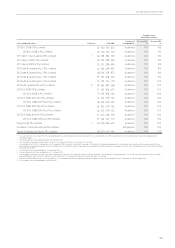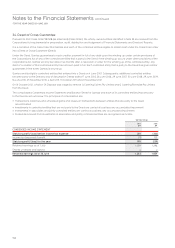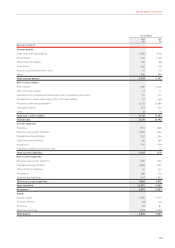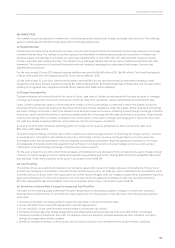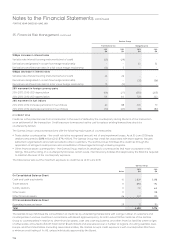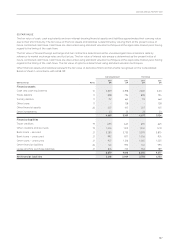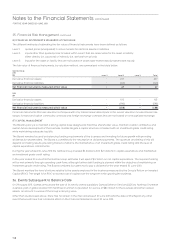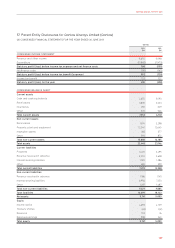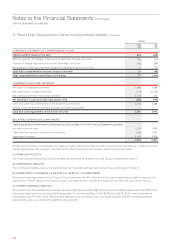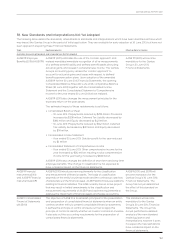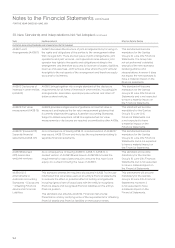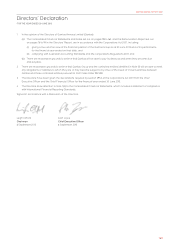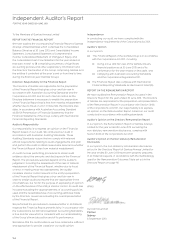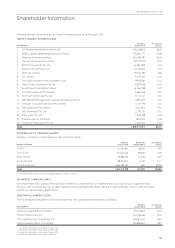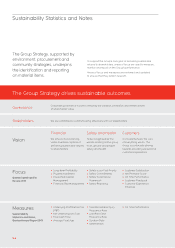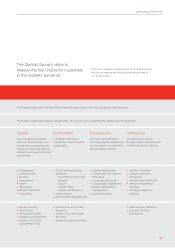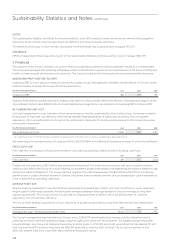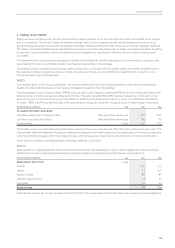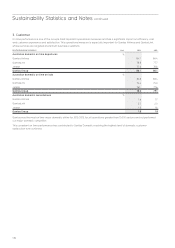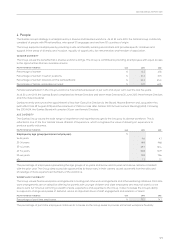Qantas 2013 Annual Report Download - page 163
Download and view the complete annual report
Please find page 163 of the 2013 Qantas annual report below. You can navigate through the pages in the report by either clicking on the pages listed below, or by using the keyword search tool below to find specific information within the annual report.
161
QANTAS ANNUAL REPORT 2013
38. New Standards and Interpretations Not Yet Adopted
The following table details the standards, amendments to standards and interpretations which have been identied as those which
may impact the Qantas Group in the period of initial application. They are available for early adoption at 30 June 2013, but have not
been applied in preparing these Financial Statements.
Topic Key Requirements Effective Date for Qantas
Australian Accounting Standards and Interpretations Not Yet Adopted
AASB 119 Employee
Benets (2011) (AASB 119)
AASB 119 (2011) eliminates the use of the ‘corridor approach’ and
instead mandates immediate recognition of all re-measurements
of a dened benet liability and dened benet assets (including
actuarial gains and losses) in comprehensive income. The Qantas
Group’s accounting policy utilises the ‘corridor approach’ to
accountfor actuarial gains and losses with respect to dened
benetsuperannuation plans. Upon adoption of the amended
AASB 119 for the 30 June 2014 Financial Statements, the opening
Consolidated Balance Sheet (30 June 2012), comparative Balance
Sheet (30 June 2013) together with the Consolidated Income
Statementand the Consolidated Statement of Comprehensive
Incomefor the year ended 30 June 2013 will be restated.
AASB 119 (2011) also changes the measurement principles for the
expected return on the plan assets.
The estimated impact of these restatements is as follows:
»Consolidated Balance Sheet
— 30 June 2012: Prepayments reduced by $293 million, Provisions
increased by $308 million, Deferred Tax Liability decreased by
$180 million and Equity decreased by $421 million.
— 30 June 2013: Prepayments reduced by $162 million, Deferred
Tax Liability decreased by $49 million and Equity decreased
by $114 million.
»Consolidated Income Statement
— Year ended 30 June 2013: Statutory prot for the year reduced
by $4 million.
»Consolidated Statement of Comprehensive Income
— Year ended 30 June 2013: Other comprehensive income for the
year increased by $312 million resulting in total comprehensive
income for the year being increased by $308 million.
AASB 119 (2011) also changes the denition of short-term and long-term
employee benets. This change in classication is not expected to
have a material impact on the nancial statements.
AASB 119 (2011) will become
mandatory for the Qantas
Group’s 30 June 2014
FinancialStatements.
AASB 9 Financial
Instruments (2010)
and AASB 9 Financial
Instruments (2009)
AASB 9 (2010) introduces new requirements for the classication
and measurement of nancial assets. The basis of classification
depends on the entity’s business model and the contractual cash flow
characteristics of the financial asset. AASB 9 (2011) introduces additions
relating to nancial liabilities. The IASB currently has an active project
that may result in limited amendments to the classication and
measurement requirements of AASB 9 and add new requirements to
address the impairment of nancial assets and hedge accounting.
AASB 9 (2010 and 2009) will
become mandatory for the
Qantas Group’s 30 June 2016
Financial Statements. The
Group has not yet determined
the effect of this standard on
theGroup.
AASB 10 Consolidated
Financial Statements
(AASB 10)
The objective of AASB 10 is to establish principles for the presentation
and preparation of consolidated financial statements when an entity
controls another entity to present consolidated financial statements.
It defines the principle of control and sets out how to apply this
principle of control to identify whether an investor controls an investee.
It also sets out the accounting requirements for the preparation of
consolidated financial statements.
This standard will become
mandatory for the Qantas
Group’s 30 June 2014 Financial
Statements. The Group has
not yet performed a detailed
analysis of the new standard,
related guidance and
interpretations, however it does
not expect the new standard to
have a material impact on the
nancial statements.


